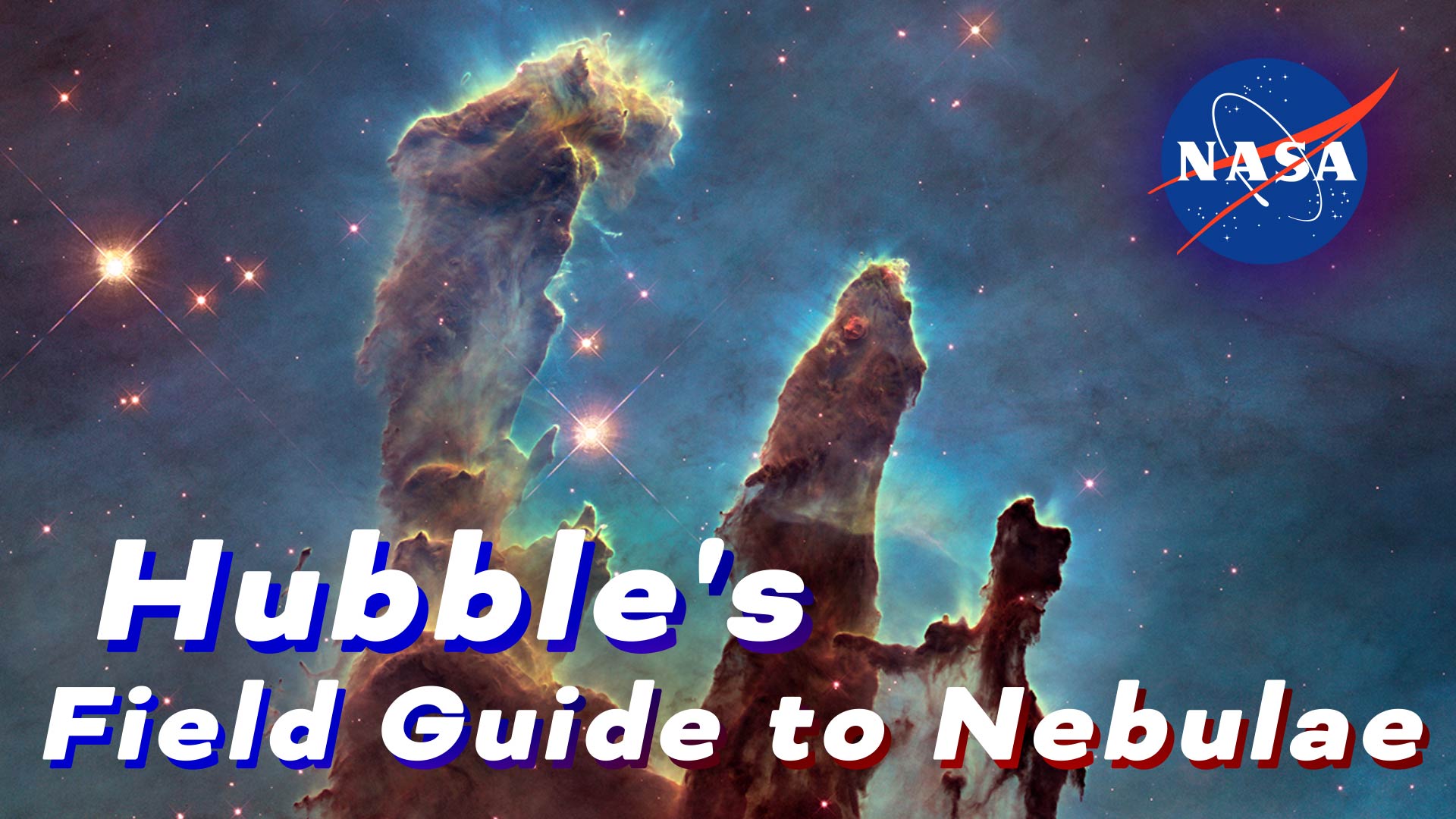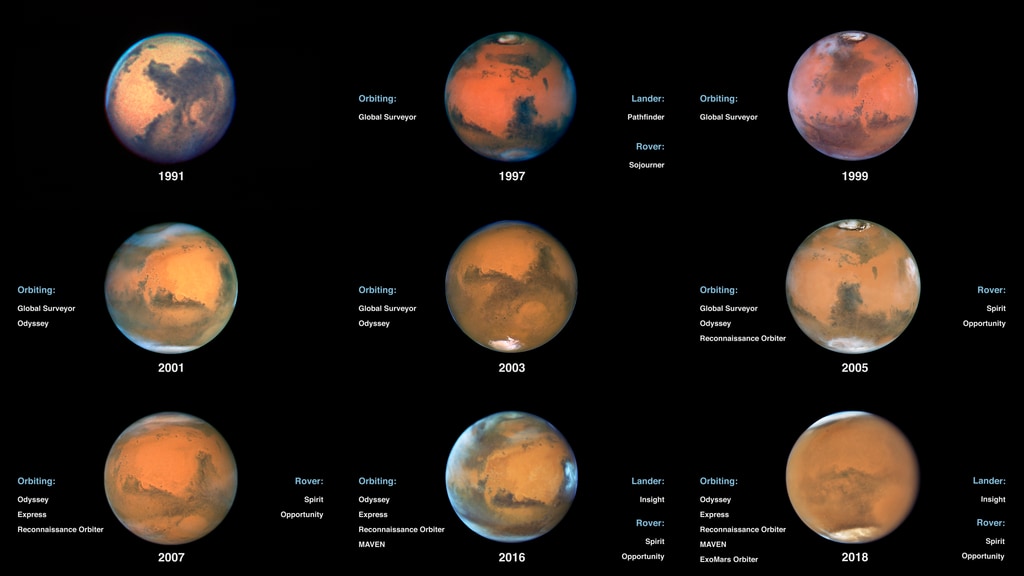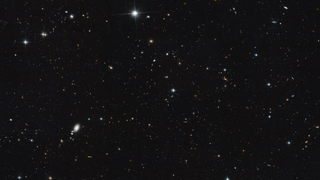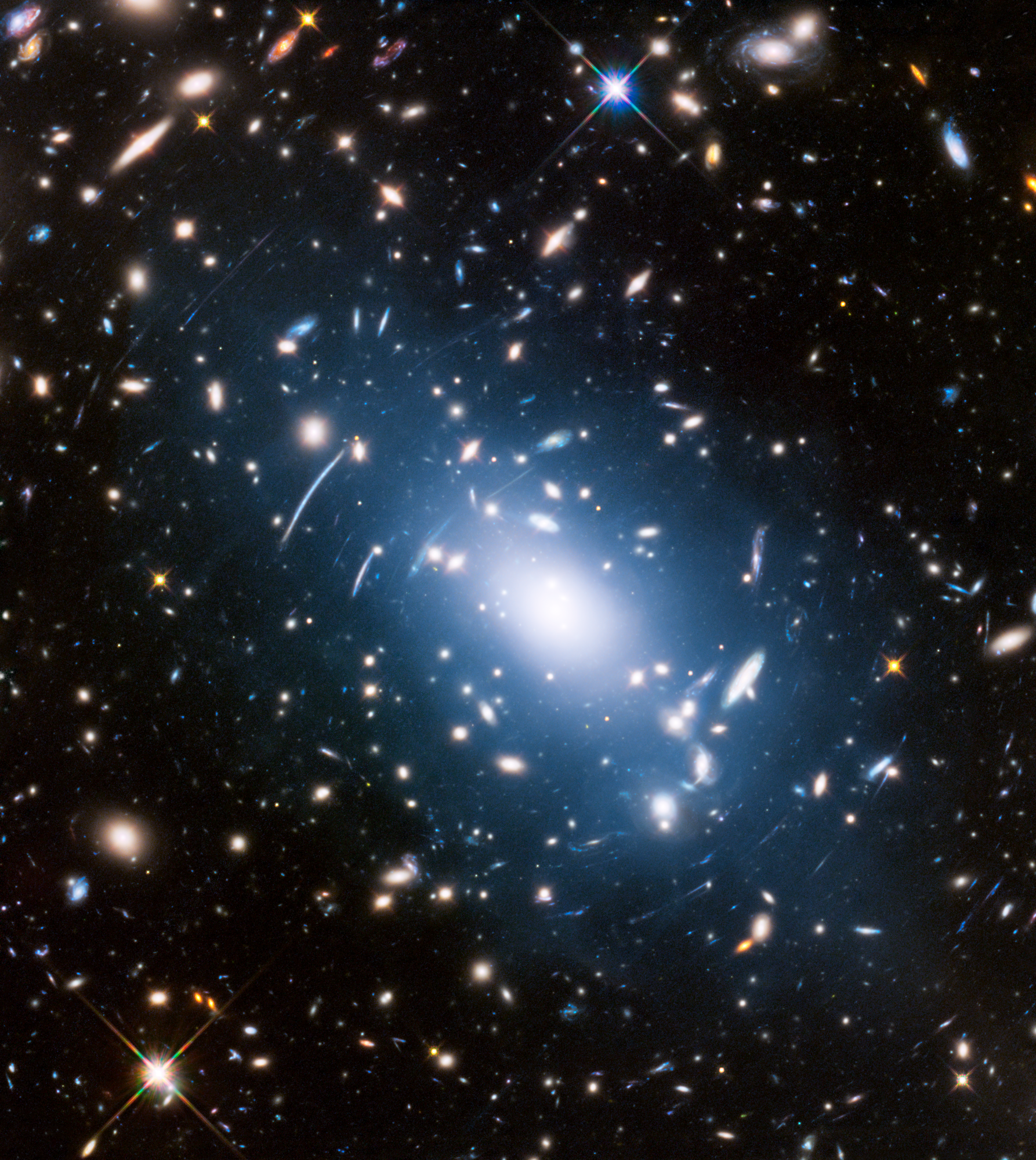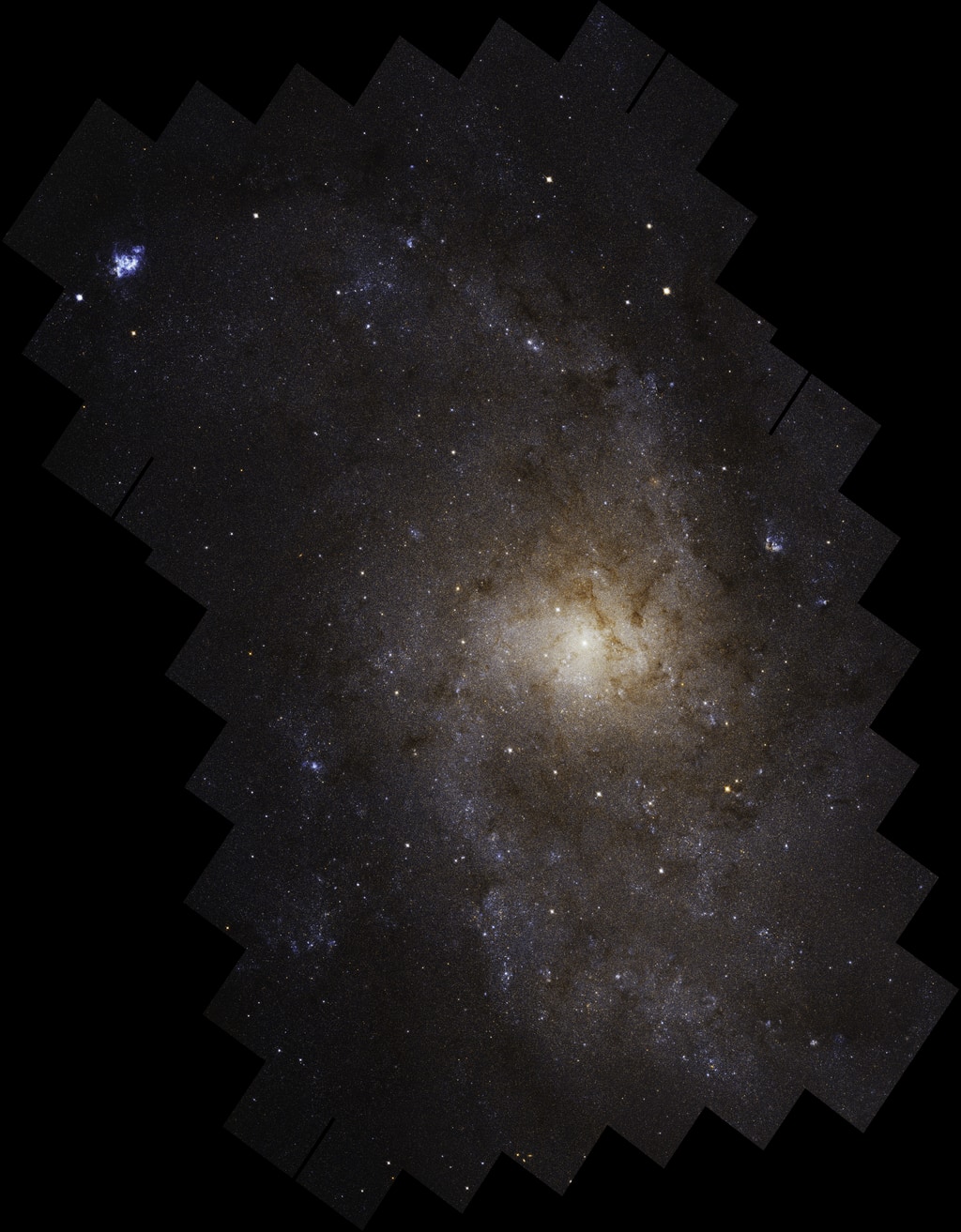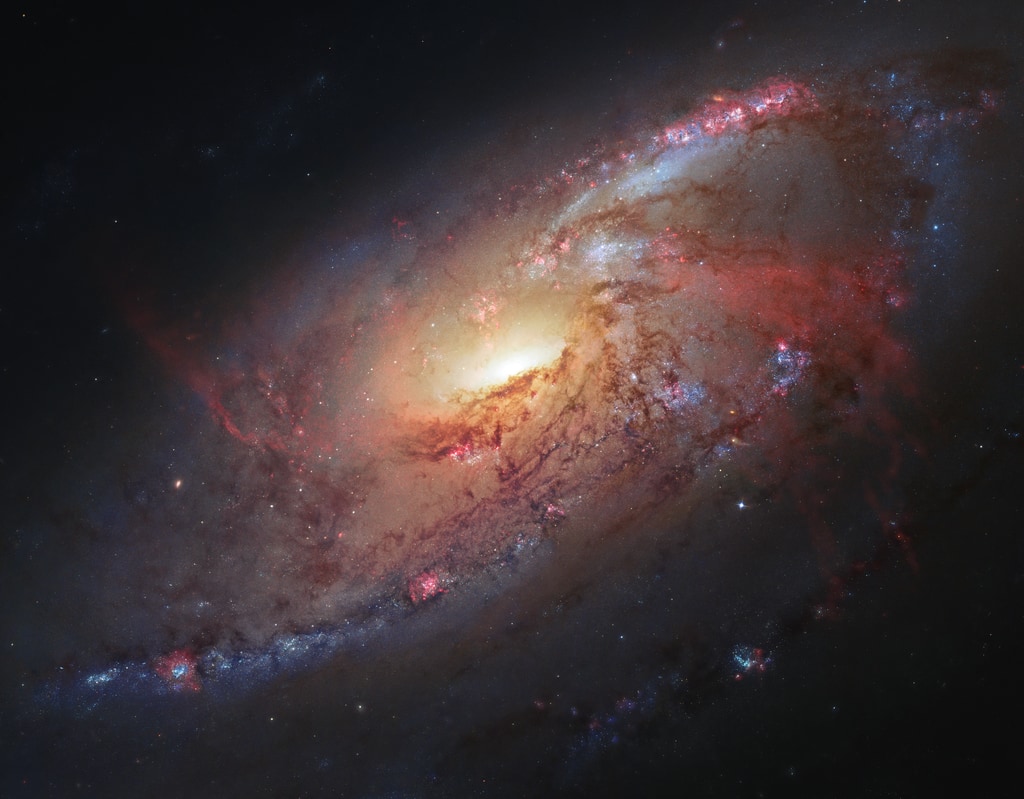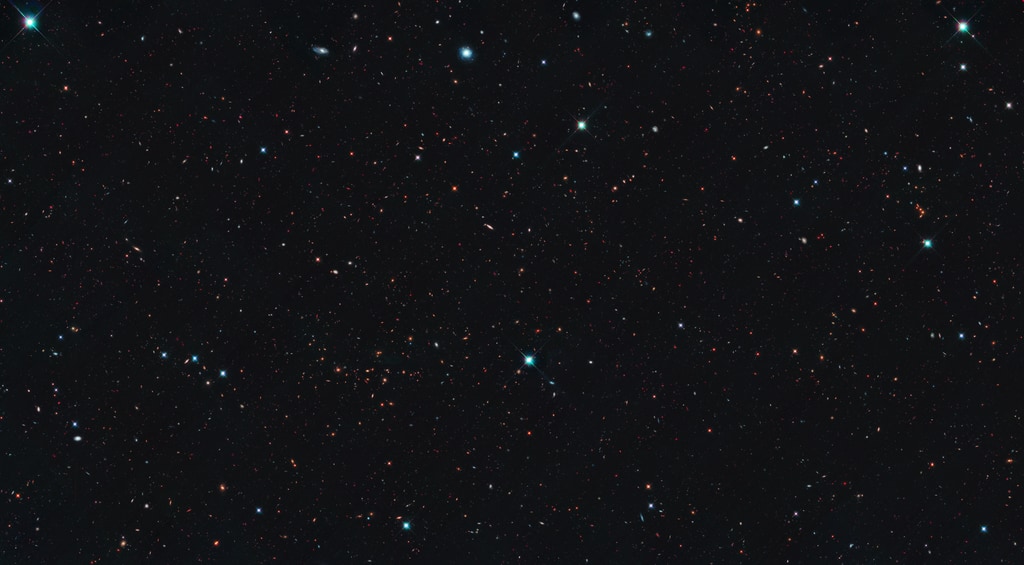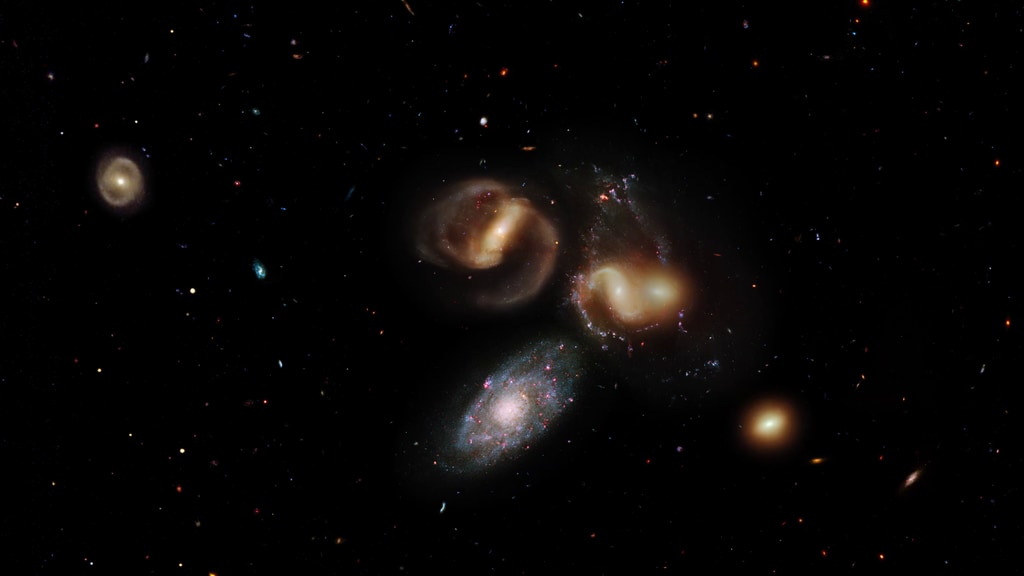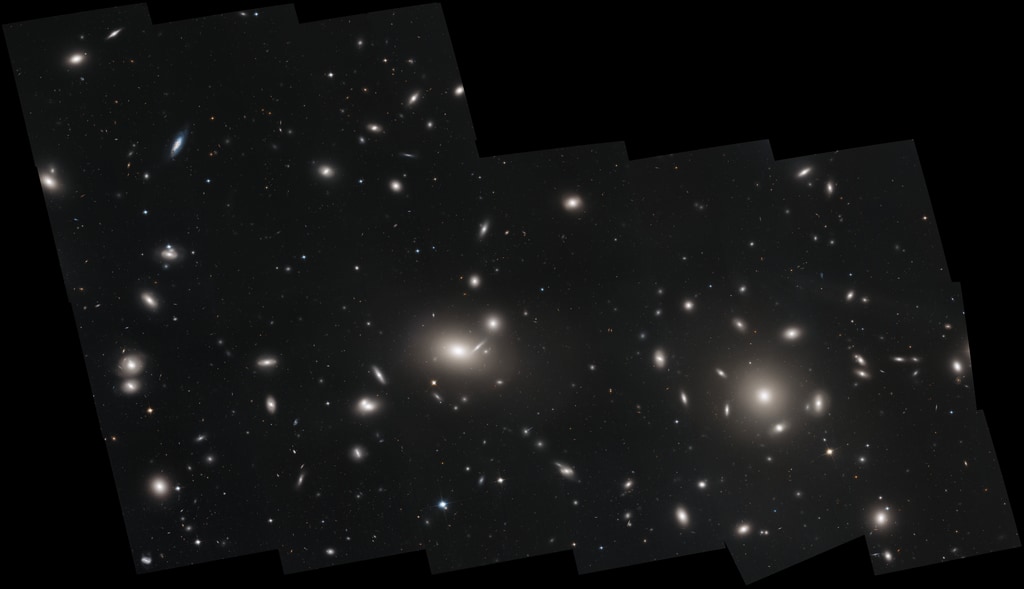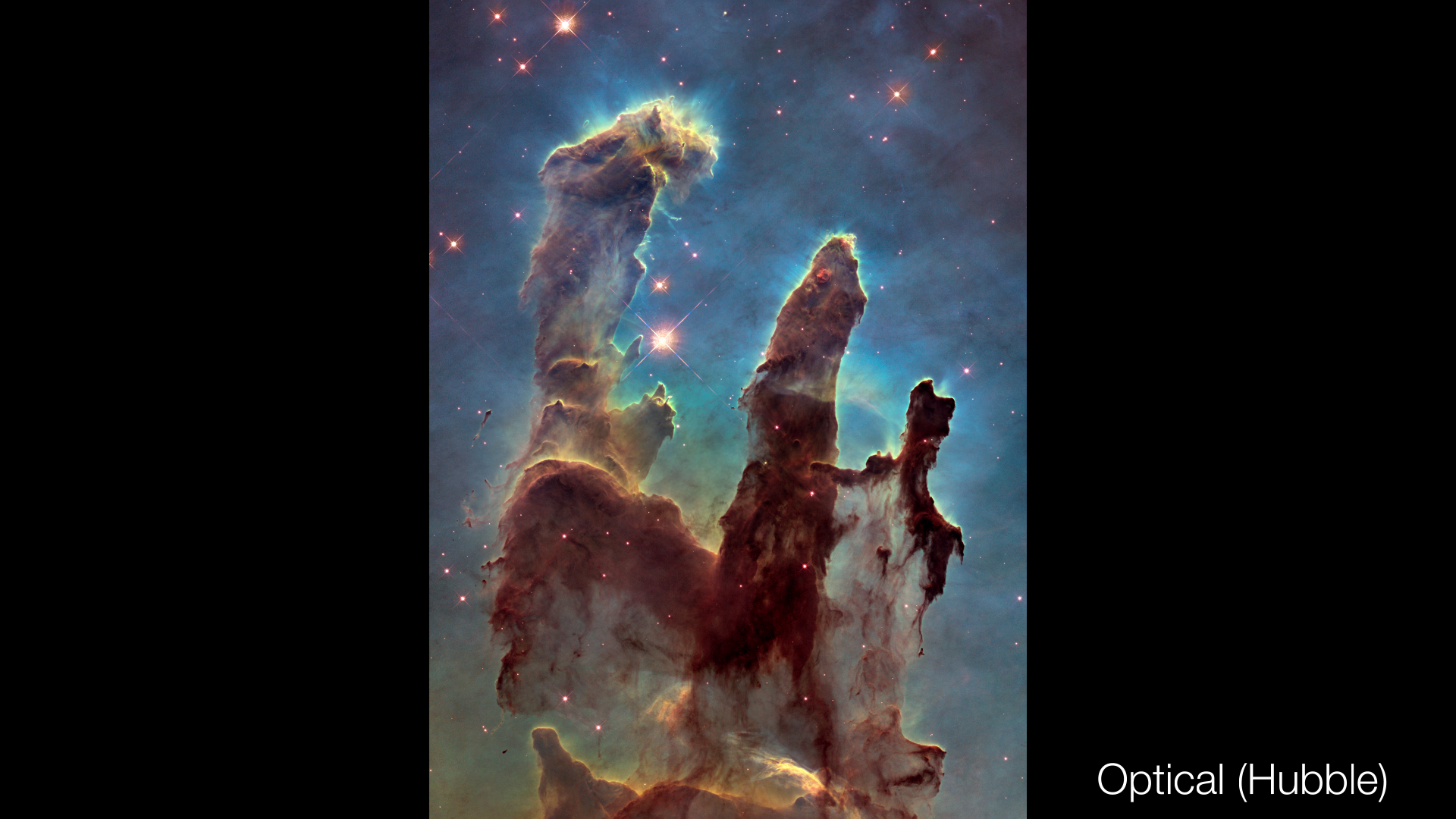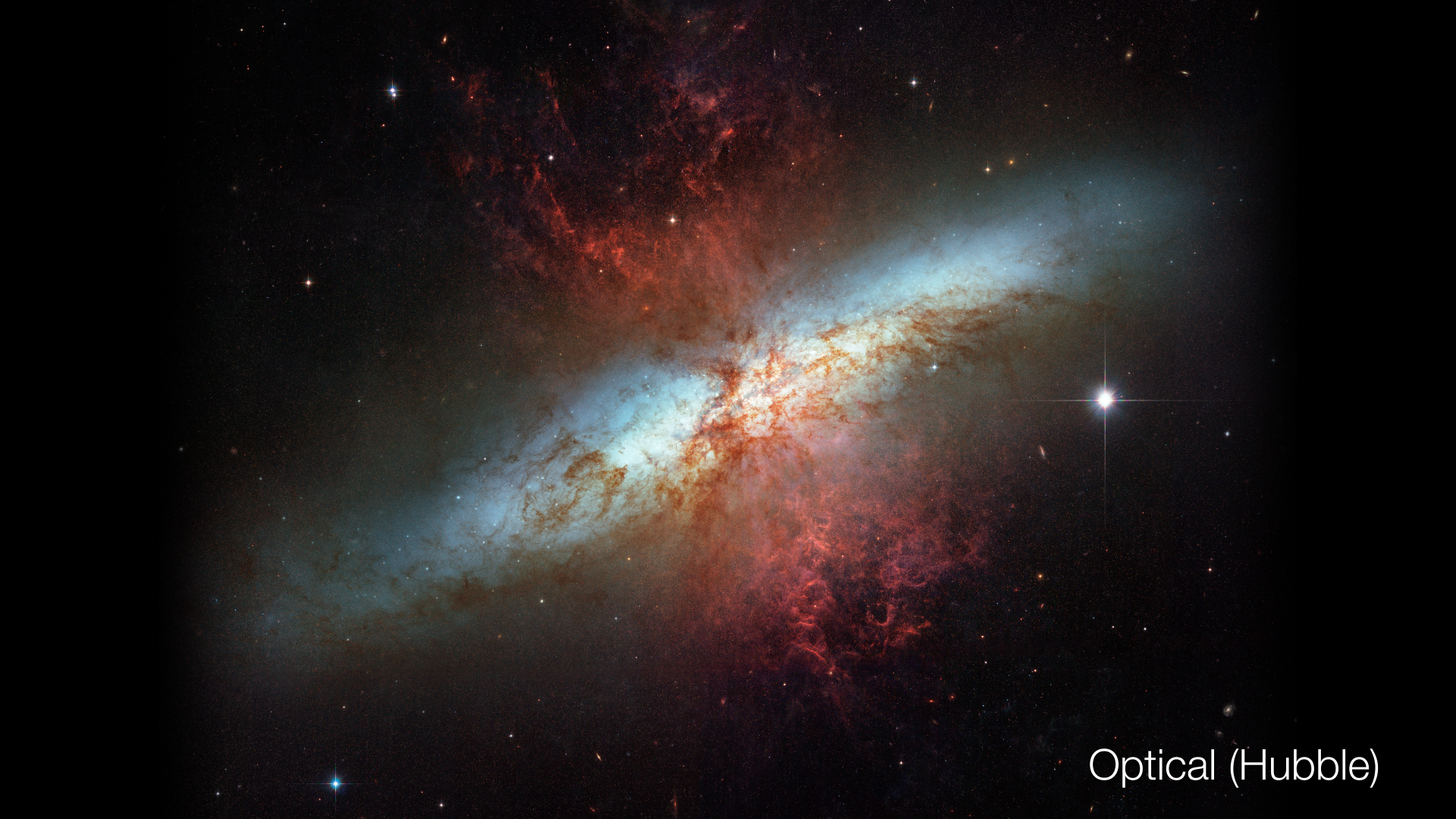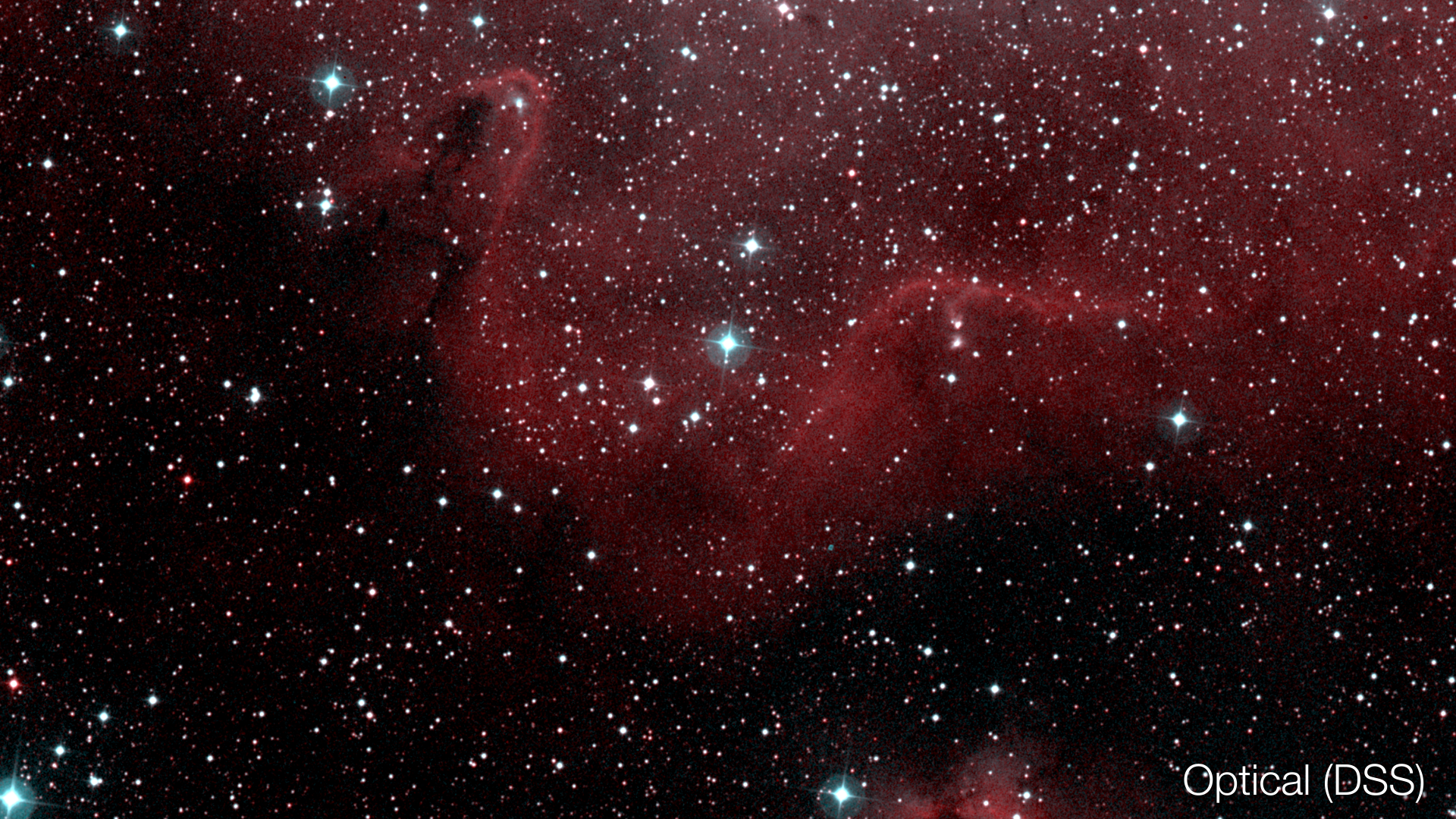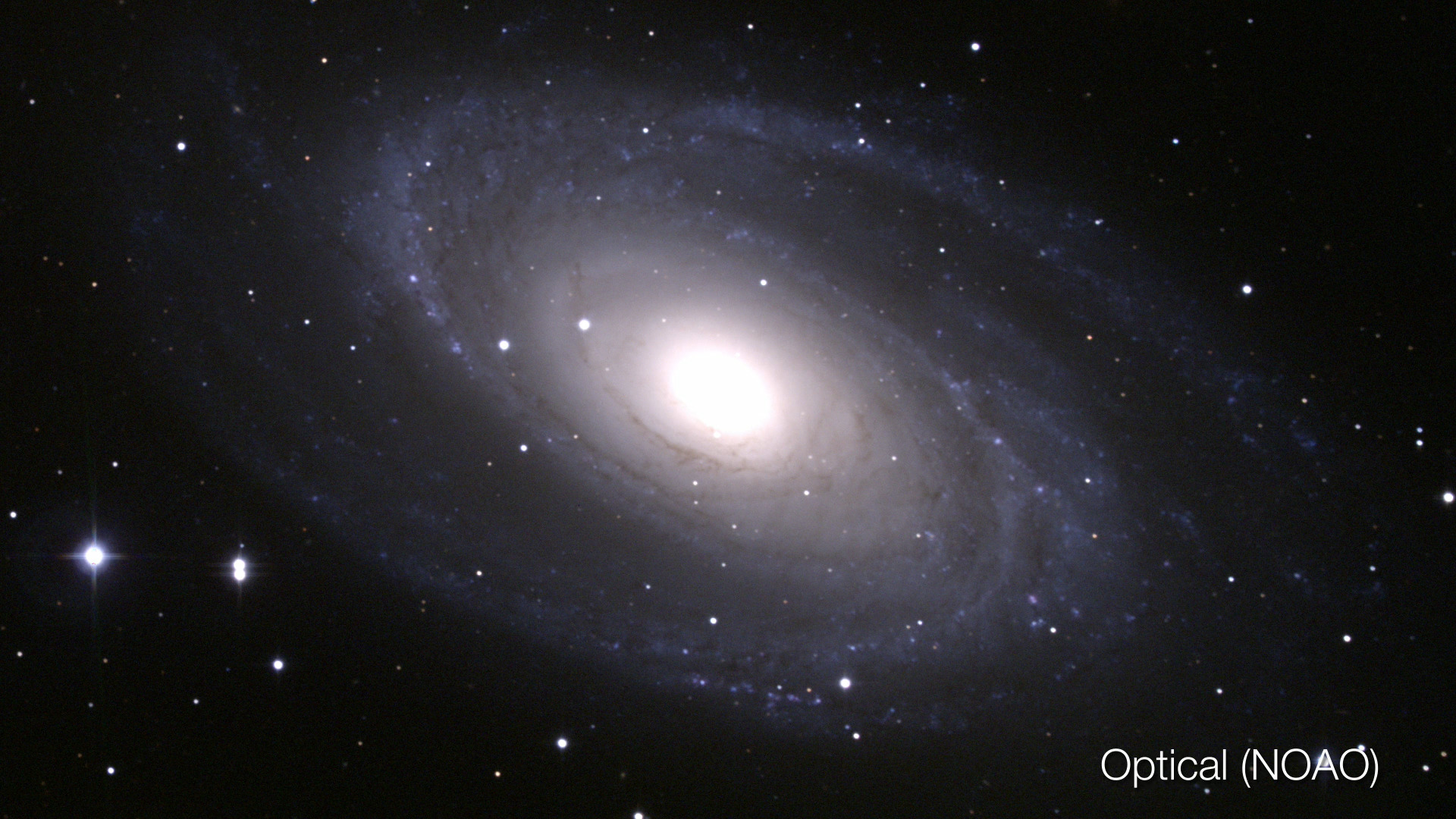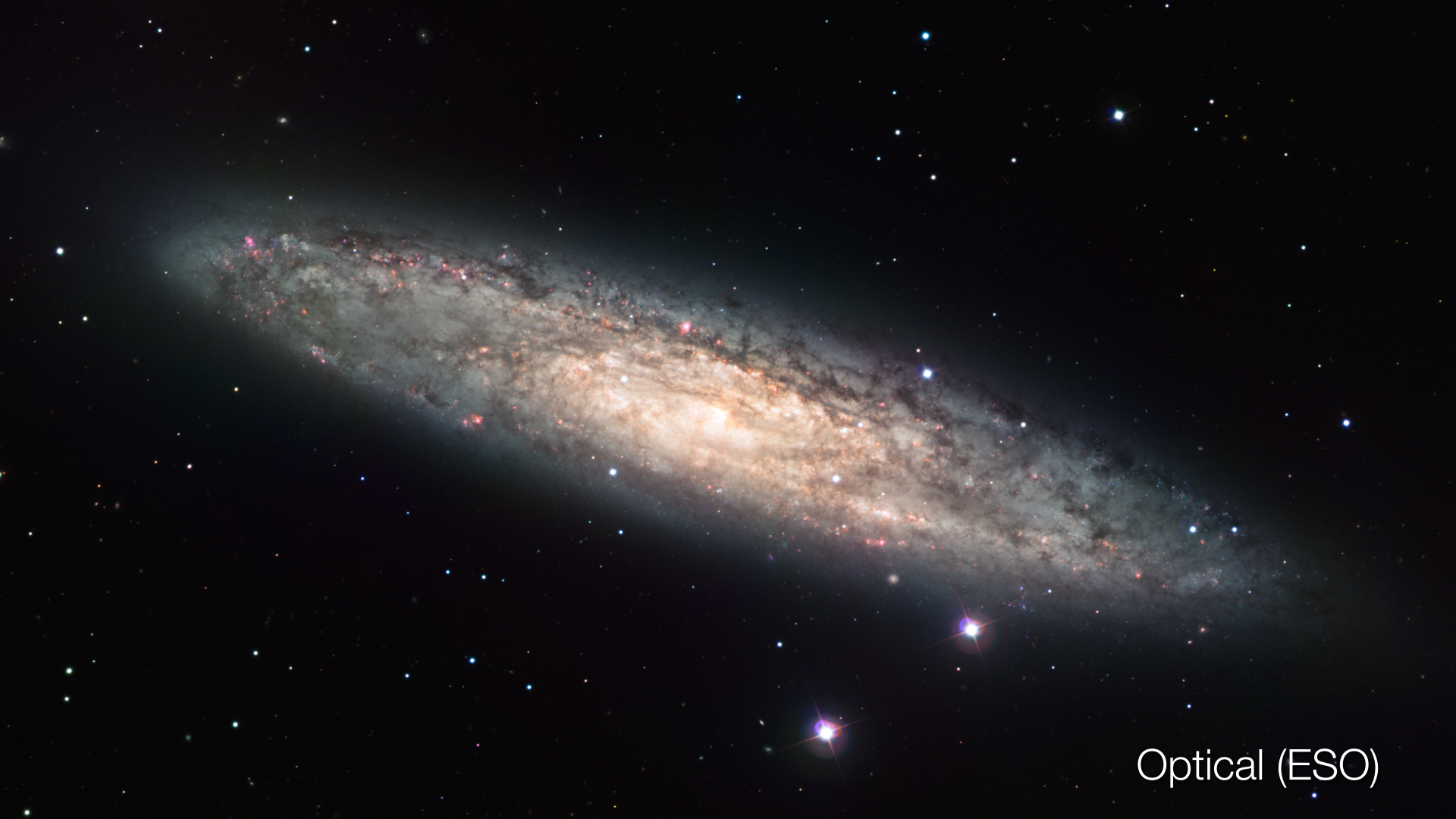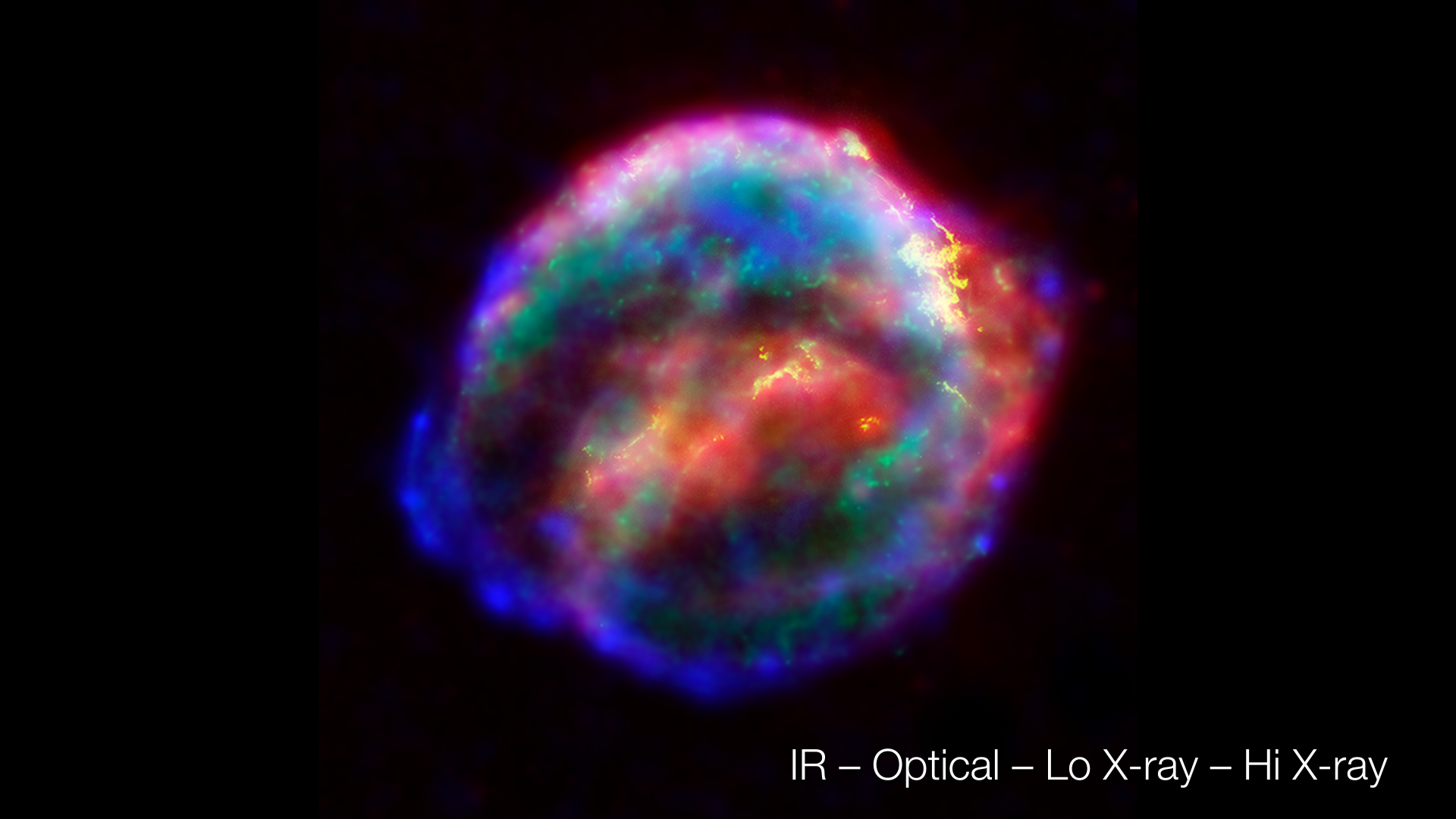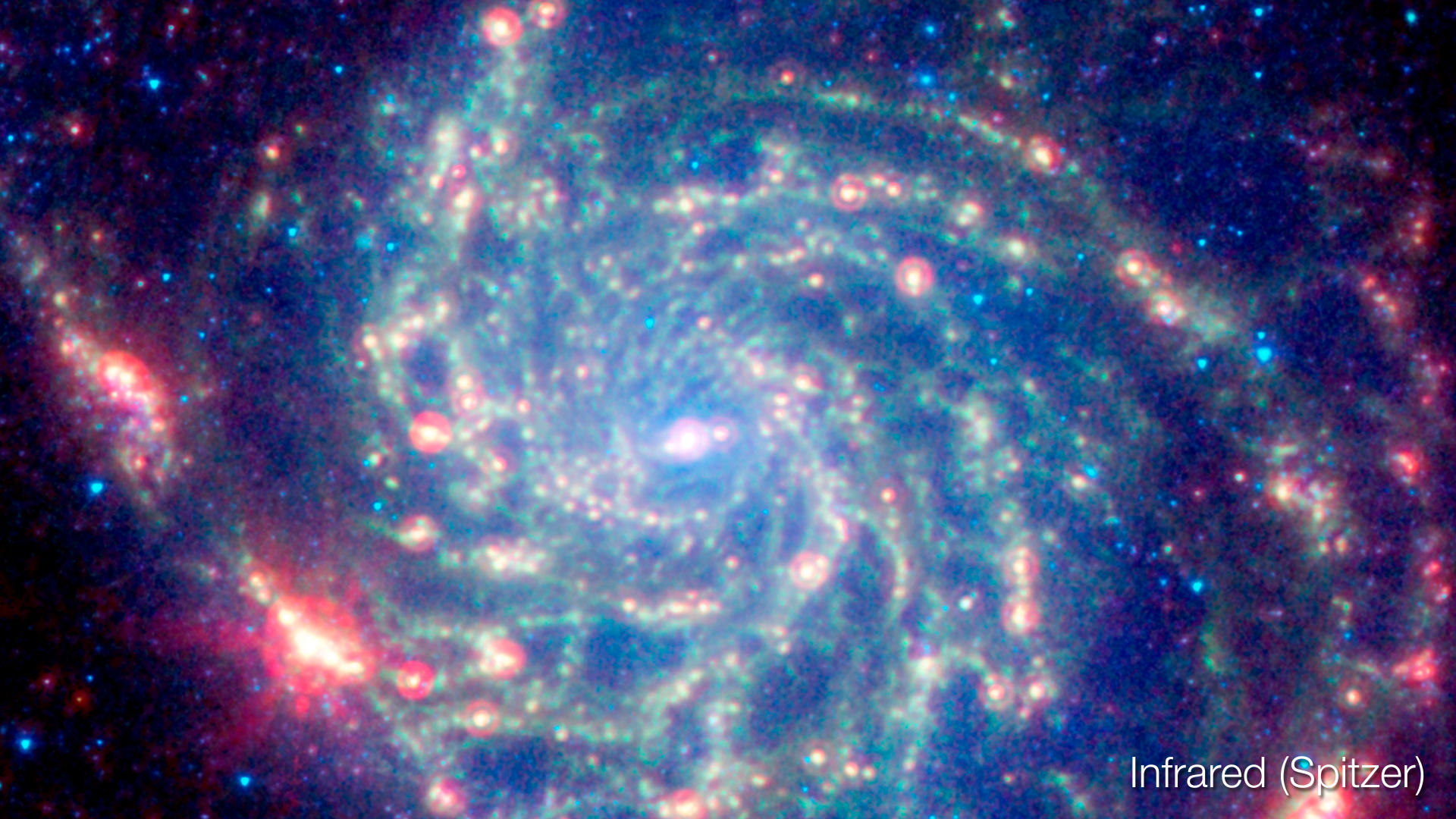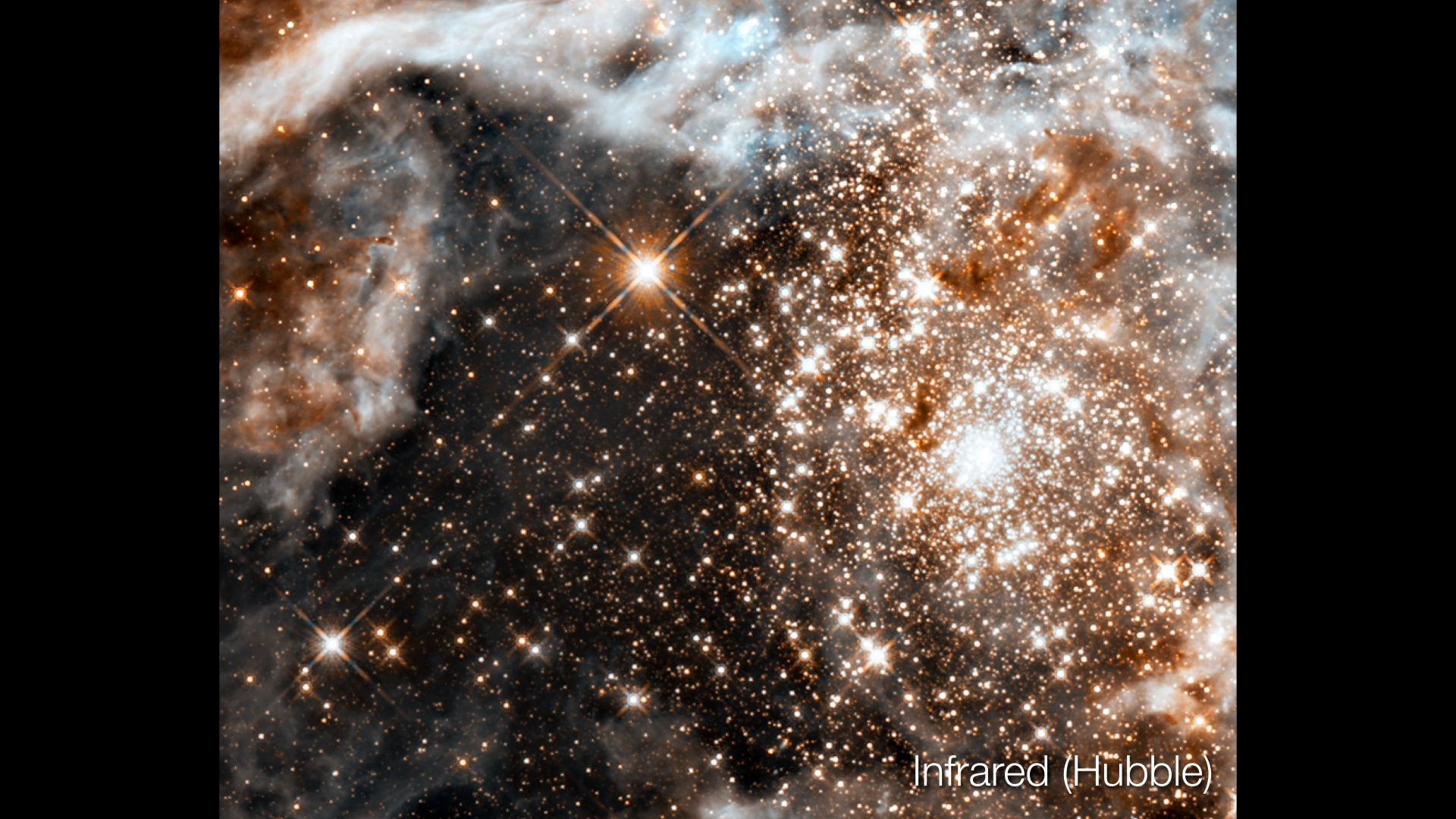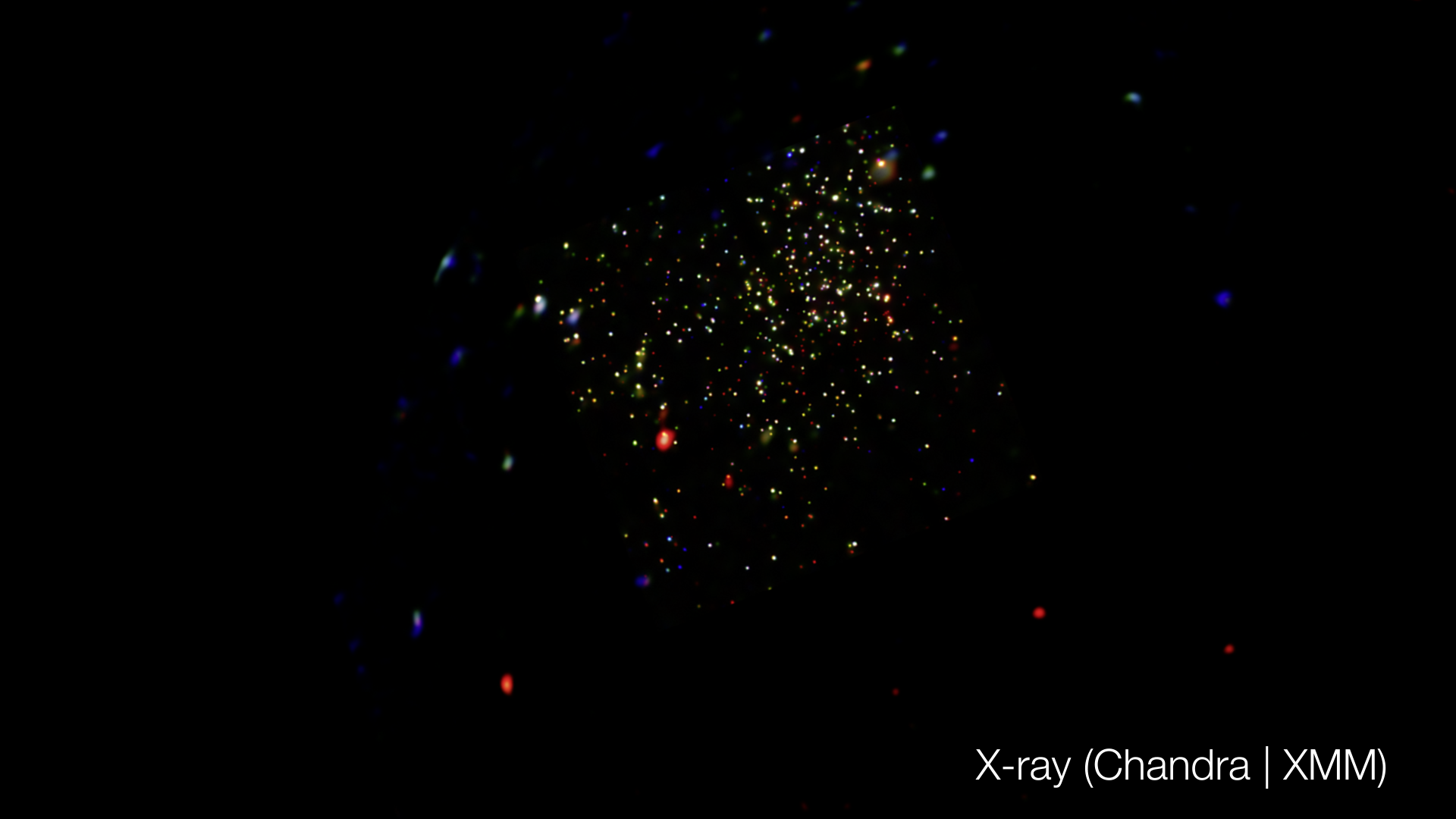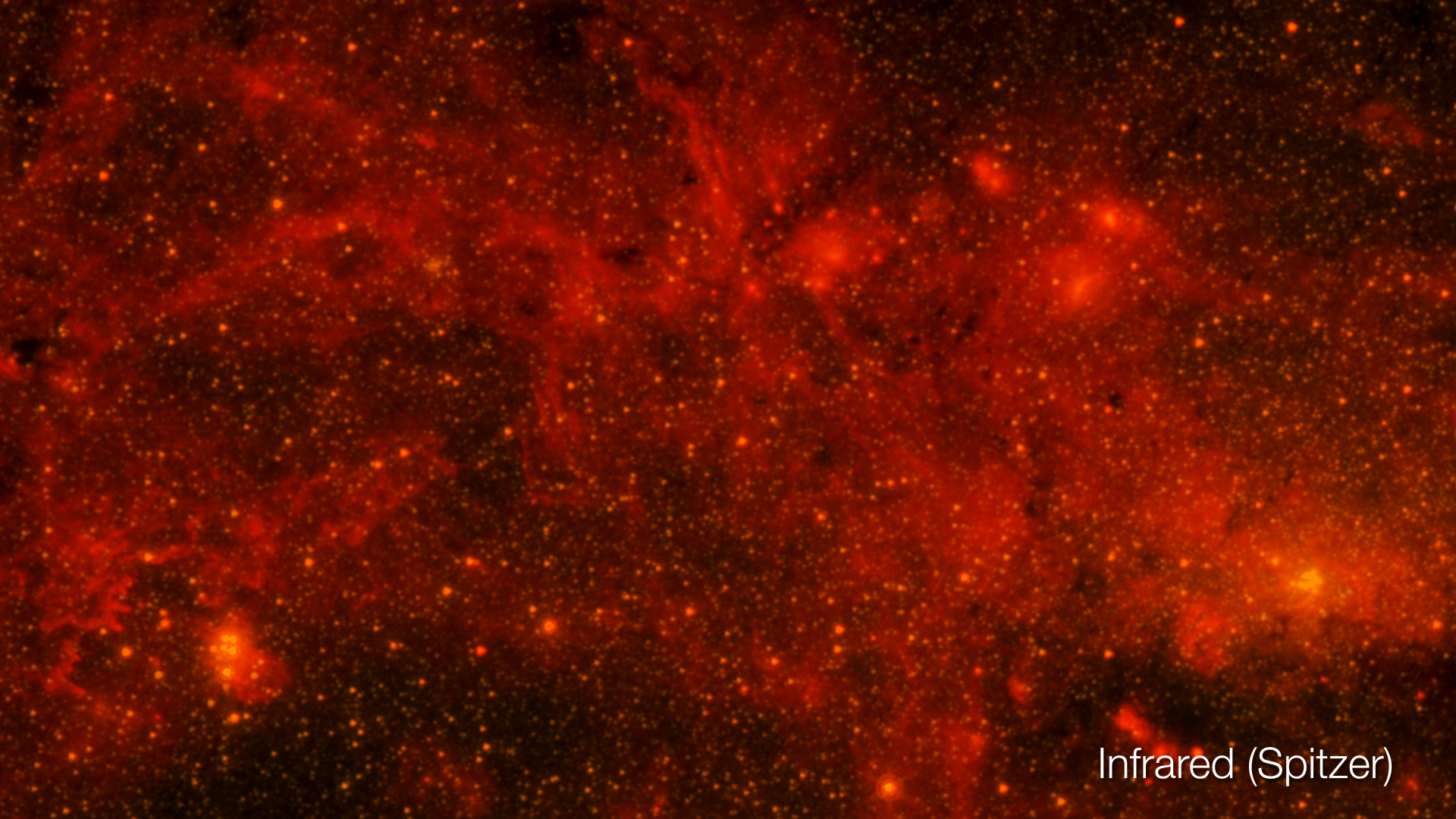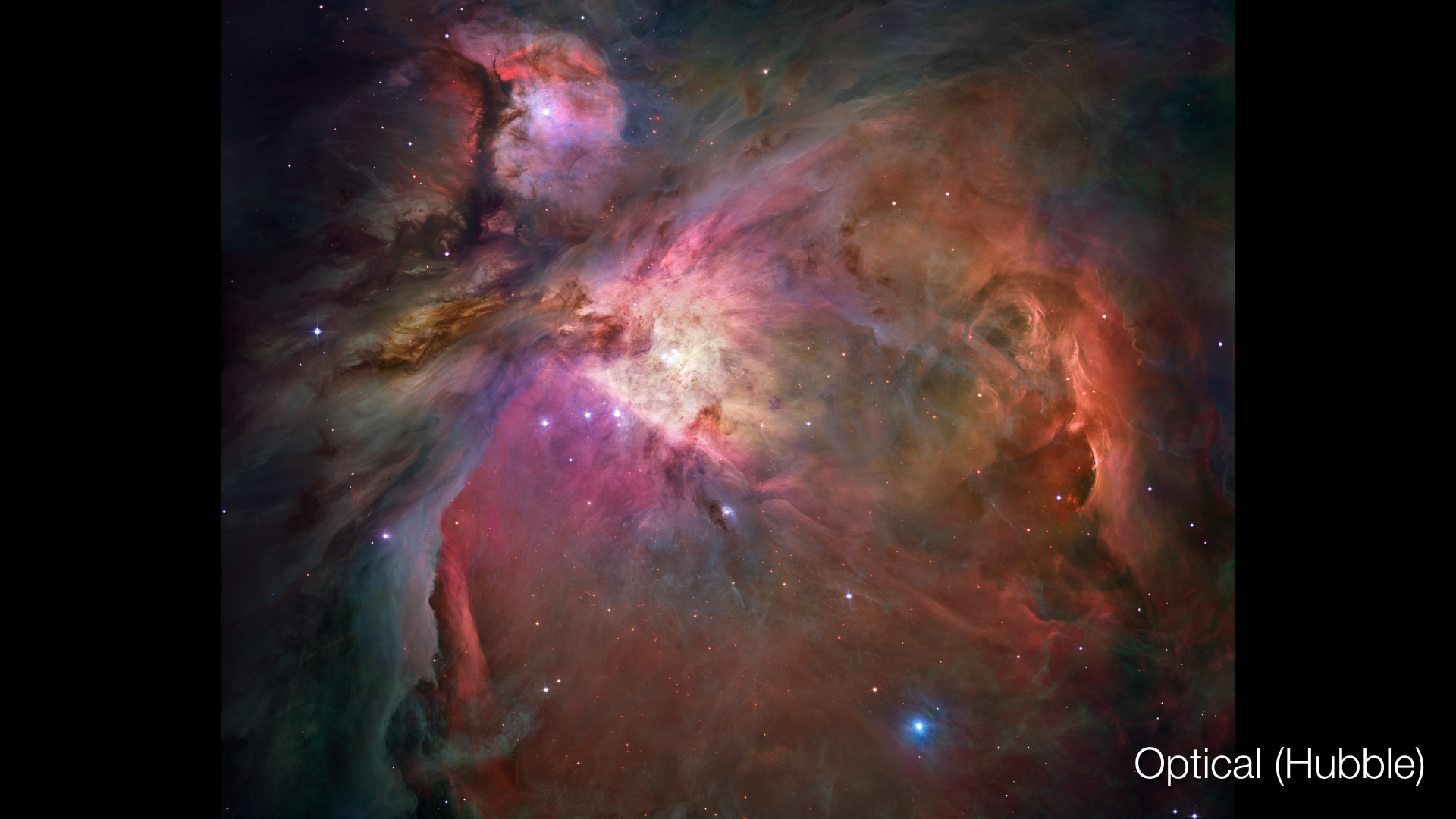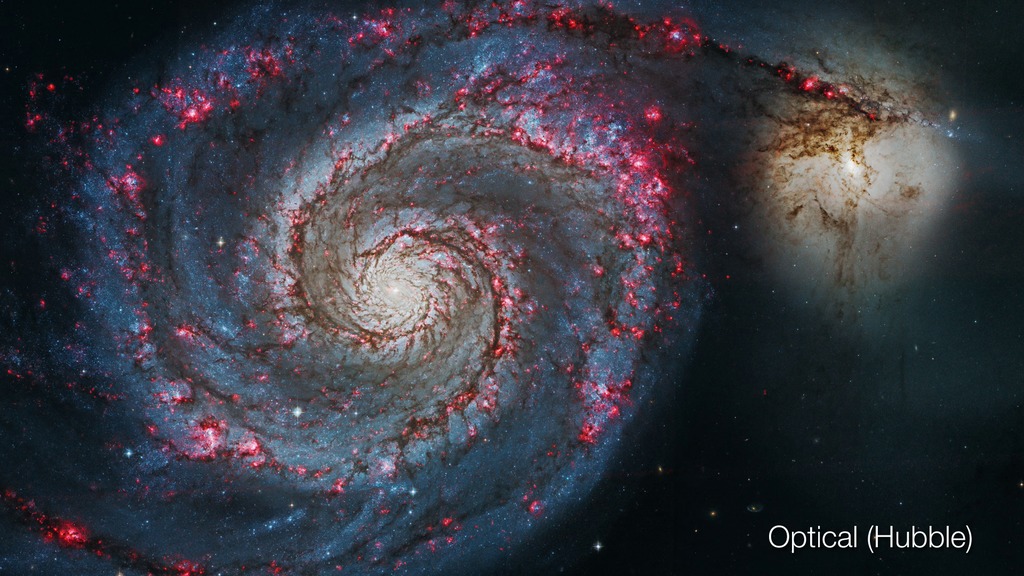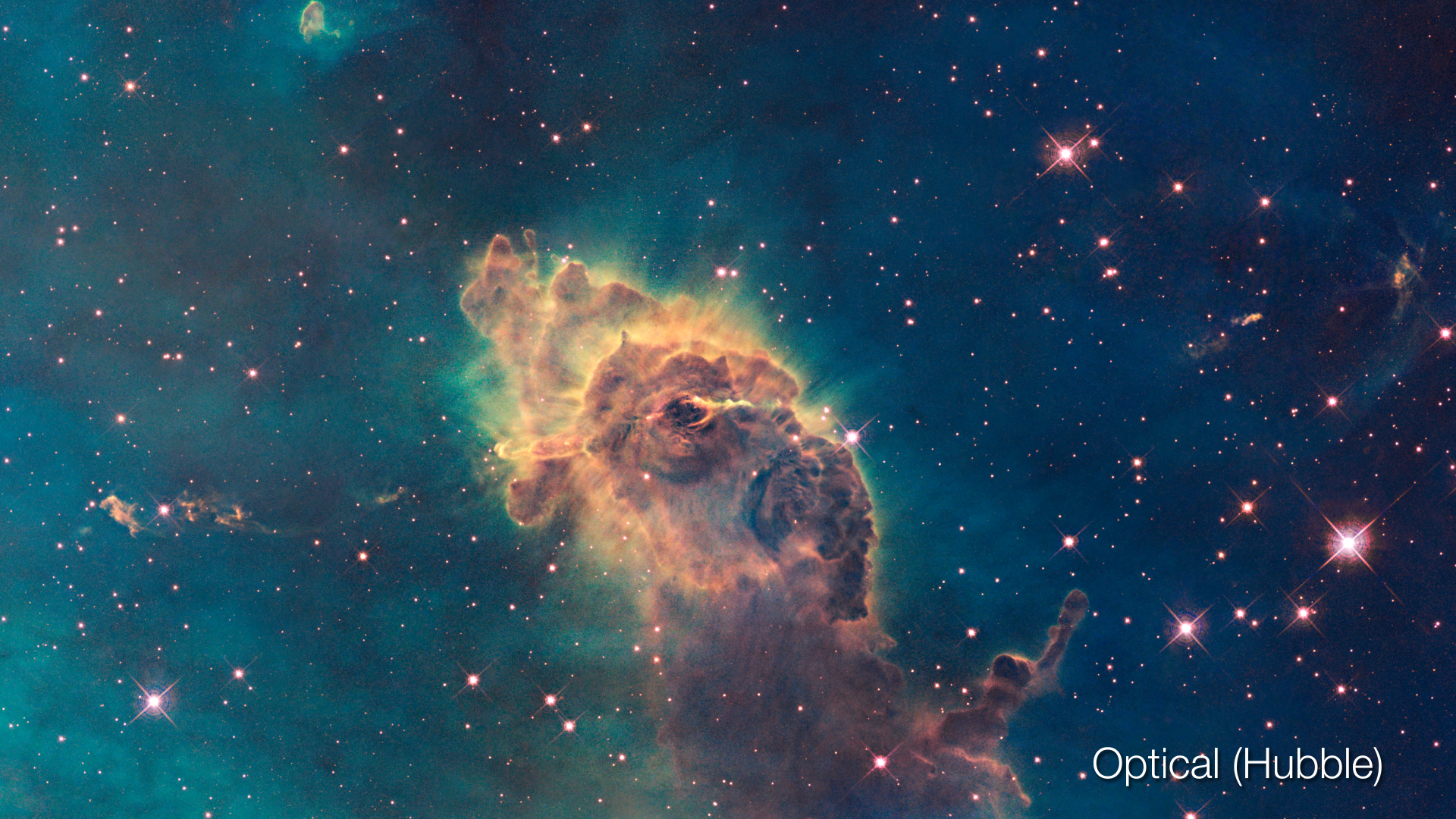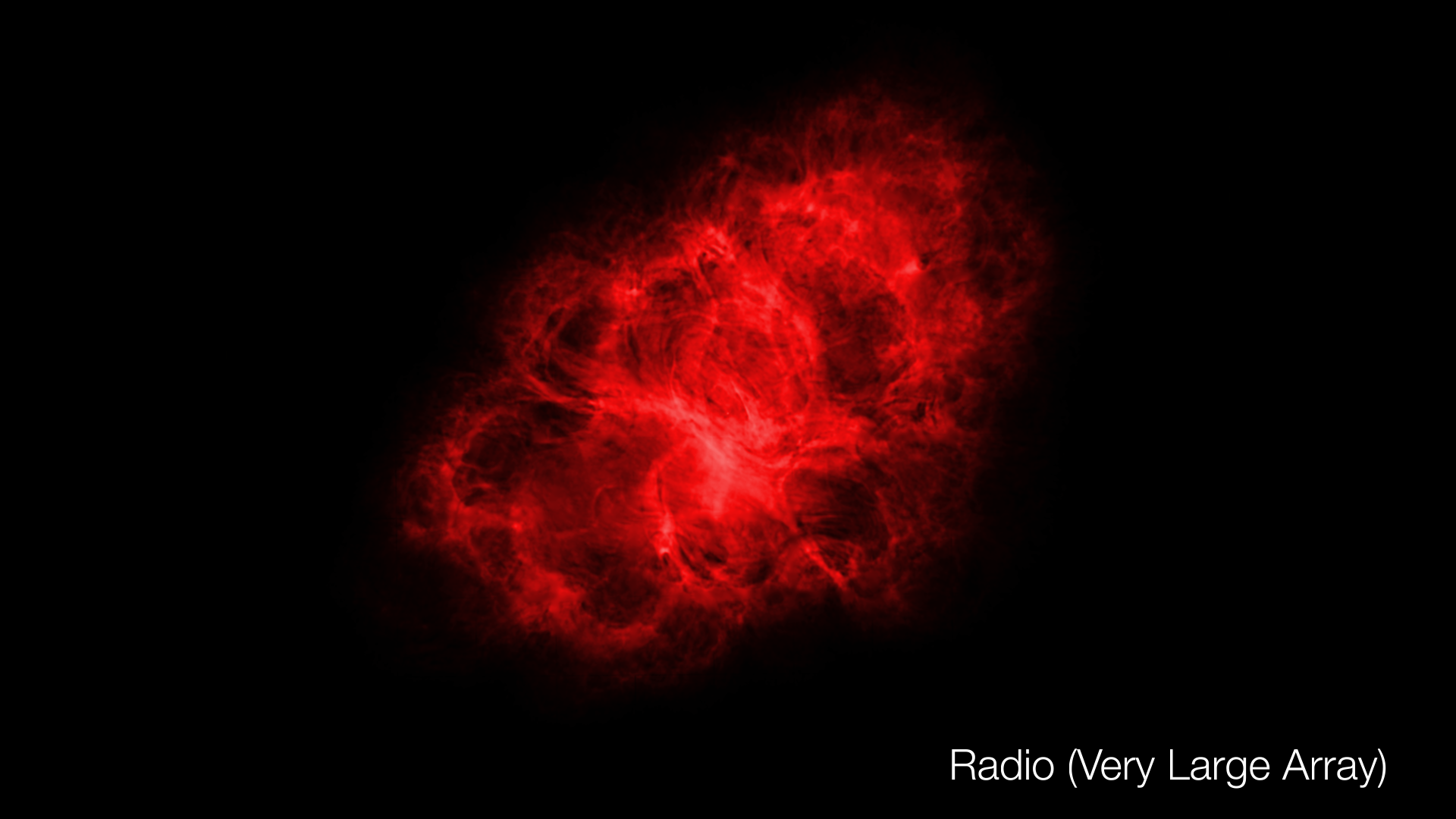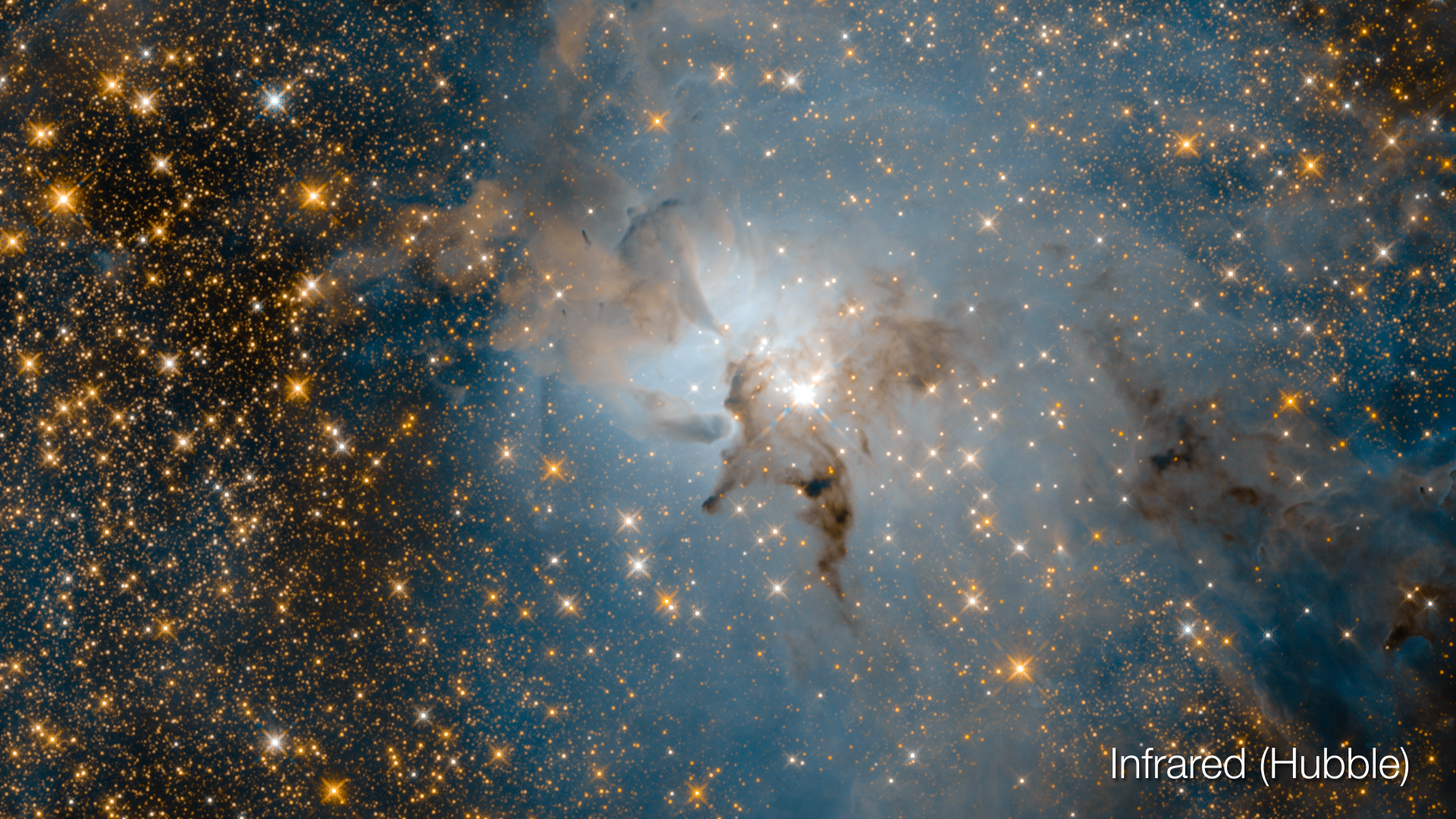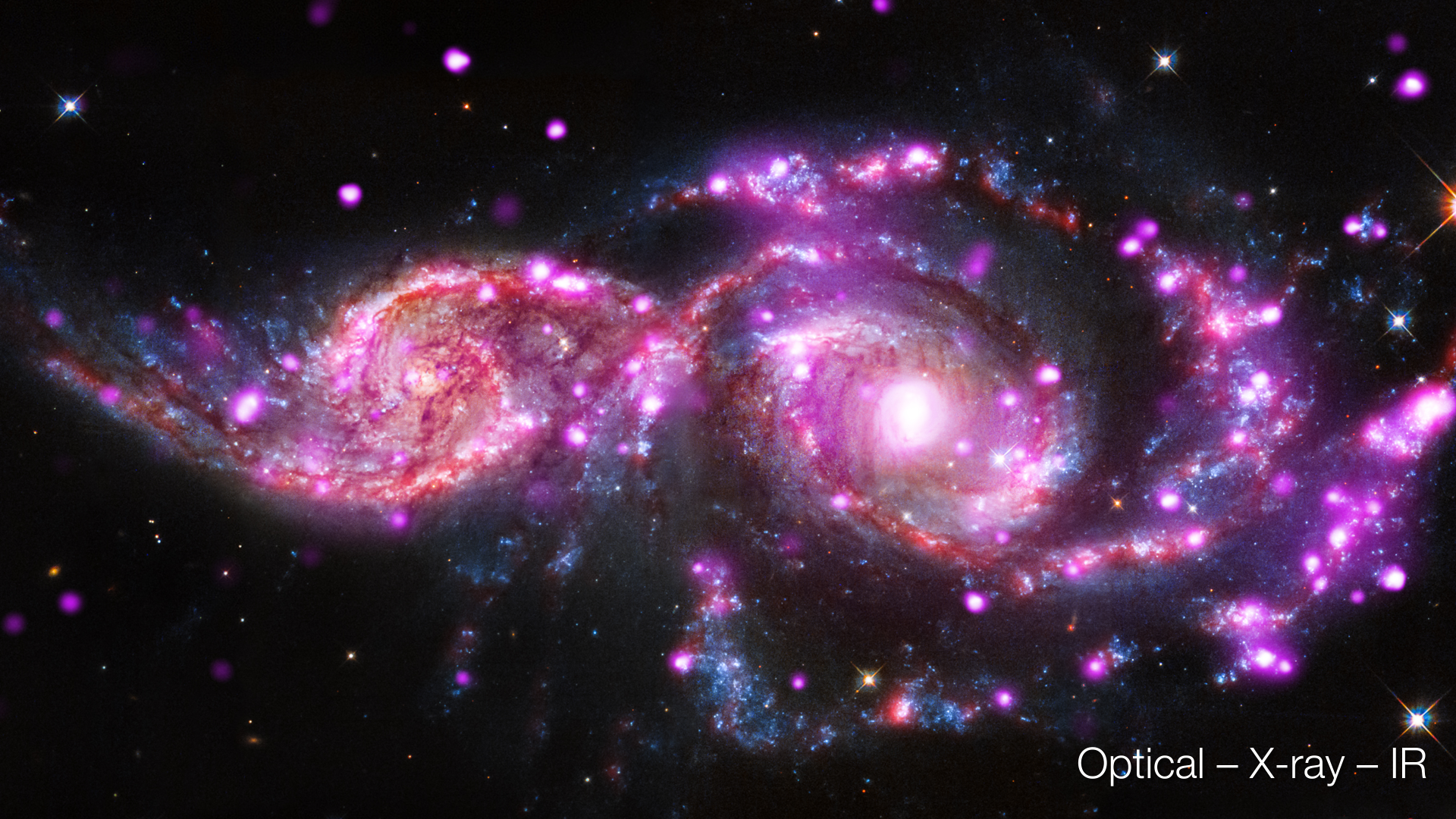Pillars in the Carina Nebula (HH901)
This animation shows Herbig Haro 901 (HH901), a large pillar of gas and dust with eruptive young stars inside the Carina Nebula. The animation reveals the object in two Hubble Space Telescope images: first in visible light and then in infrared light.
Herbig Haro 901 is an immense pillar of gas and dust inside the Carina Nebula, a huge star-forming region in our galaxy. The pillar is several light-years tall and contains a few massive young stars. They shoot out powerful jets that emerge from the cloud. In some cases, the jets create bow-shock patterns similar to the effects of a ship plowing through the ocean. In the visible-light (Hubble) view, very few stars can be seen because the gas and dust block starlight. But in the infrared (Hubble) view, stars become visible and numerous. The visible-light colors emerge from the glow of different gases: oxygen (blue), hydrogen/nitrogen (green), and sulfur (red). The Carina Nebula is approximately 7,500 light years from Earth.
This animation is the same as above, played twice as fast.

Visible light image of the Pillars in the Carina Nebula.

Infrared light image of the Pillars in the Carina Nebula.

Visible and Infrared light image of the Pillars in the Carina Nebula.
Credits
Please give credit for this item to:
Video: NASA, ESA and G. Bacon (STScI) Image: NASA, ESA,and the Hubble 20th Anniversary Team (STScI)
-
Visualizer
- Greg Bacon (STScI)
-
Technical support
- Leann Johnson (Global Science and Technology, Inc.)
Missions
This page is related to the following missions:Datasets used
-
[Hubble Space Telescope]
ID: 831
Note: While we identify the data sets used on this page, we do not store any further details, nor the data sets themselves on our site.
Release date
This page was originally published on Wednesday, April 11, 2018.
This page was last updated on Sunday, March 9, 2025 at 11:48 PM EDT.
